Commerce and community are pedestrian activities. Top-down building of highway harms both commerce and community.
Car costs a family about $9,282, is parked 95% of the time with ~85% of car costs leave the local economy. 2.24 cars per household (278.06 million cars, 124.01 million households) 4.6 tons of CO2/car/year
Study: How Car Ownership is Keeping Americans From Financial Stability
Newsweek: “Americans needed an annual income of at least $100,000 to afford a car. That means that more than 60 percent of American households currently cannot afford to buy a new car. For individuals, the numbers are even worse, with 82 percent of people below the $100,000 line”
Only 1.2% of land area in the 35 largest US cities are walkable land and generate 20% of GDP.
The Bragdon Committee: “In the late fifties, General J. S. Bragdon, working for the President, made some very serious charges against the Bureau of Public Roads’ (BPR) stewardship of the Interstate highway program and recommended far-reaching changes in the program. Among other things, he recommended an Interstate toll program, a cut-back in urban mileage, and a moratorium on all urban projects until a comprehensive planning process was established.”
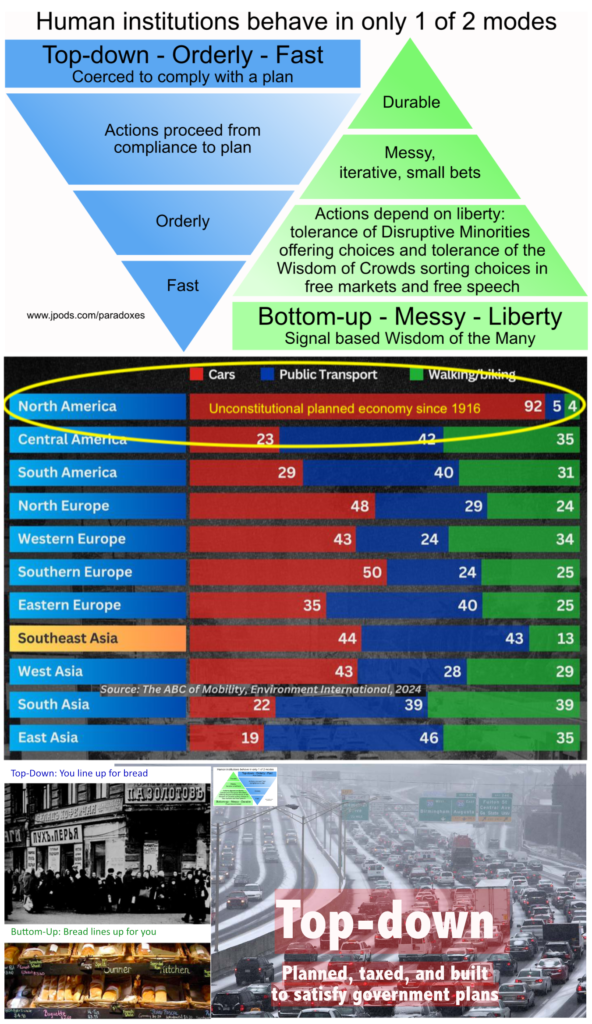
Federal highway policies force Americans to buy cars and make unwalkable cities.
We know from history that if streets are made safe for pedestrians and bike-riders:
- Oil use per person can be reduced 60%.
- Road-kills of pedestrians and bike-riders dropping 400%.
- Parking problems are mitigated.
- Traffic congestion is radically reduced.
When I was a child in the 1950-60s it was safe to walk and bike. We rode bike everywhere. It was nothing special to deliver papers, bike to work and school.
With the unconstitutional (see Boston Tea Party, Preamble, post Roads, and No Preference) Federal-Aid Highway Act of 1956, Federal highway dollars funded 90% of making streets unsafe for pedestrians and bike-riders. Europe followed US highway-centric policies with the same oil consumption (43 MWh per person per year) and safety records. Following the 1973 Oil Embargo, policies in Sweden and Denmark diverged from US policies. US polices continued sprawl. Sweden/Denmark made road safe to walk and bike with per person oil consumption decreasing by 60% below the US. Pedestrian and bike-rider road-kills decreased to 400% below the US.

North Dakota Governor on Strong Towns
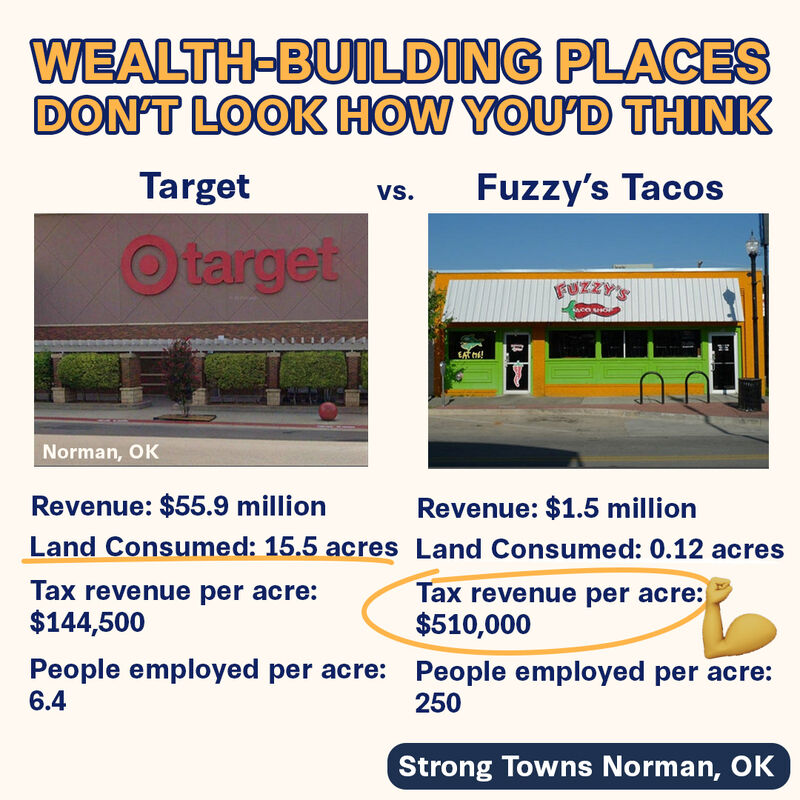
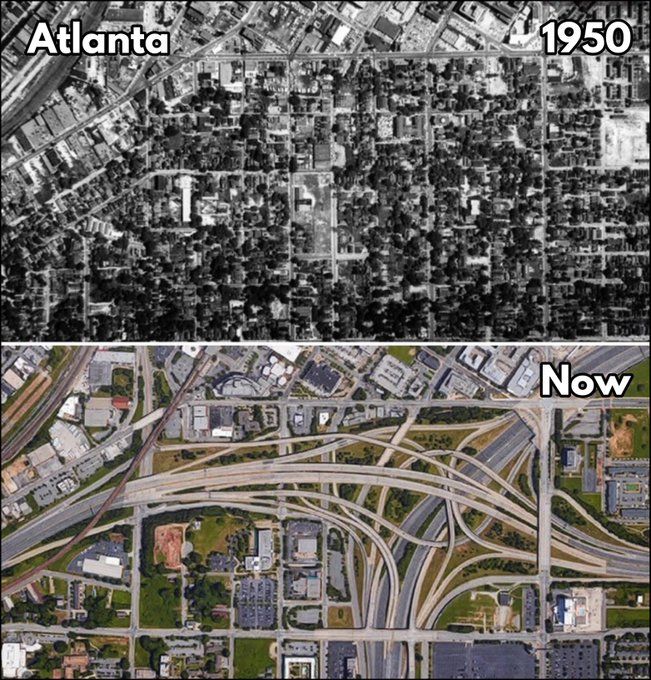
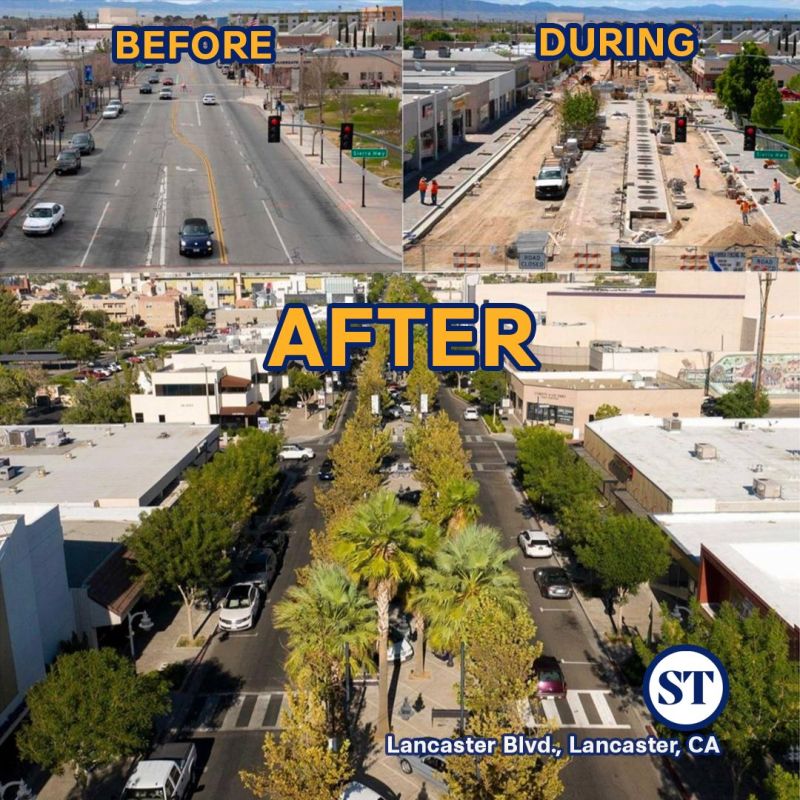
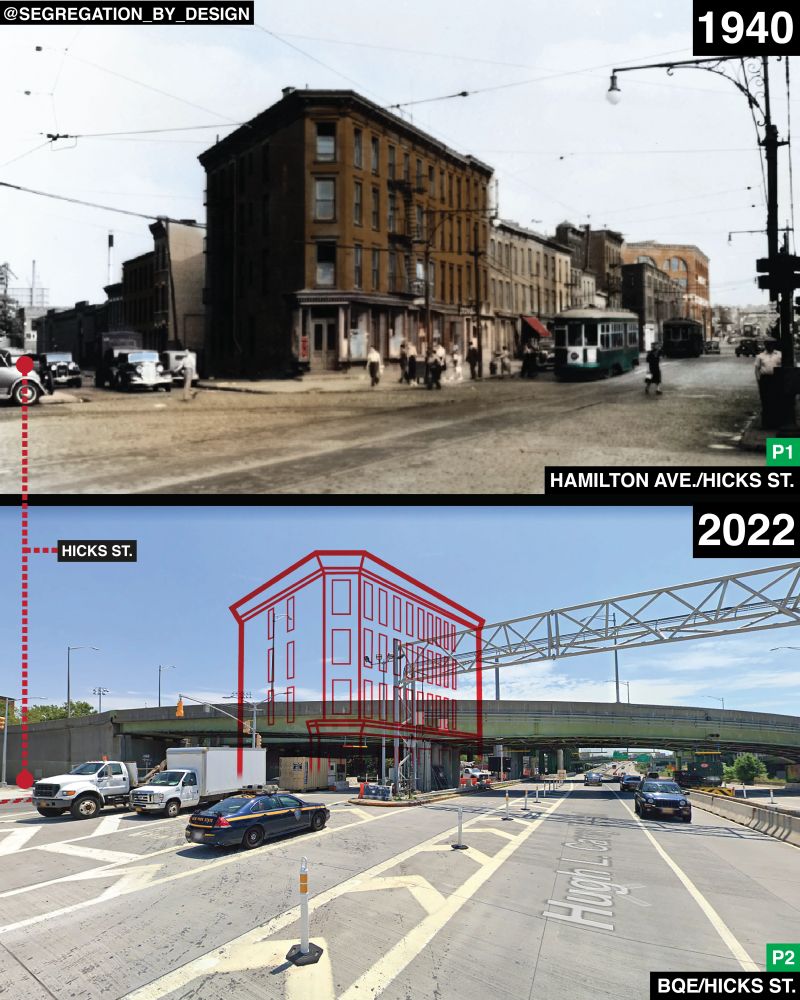

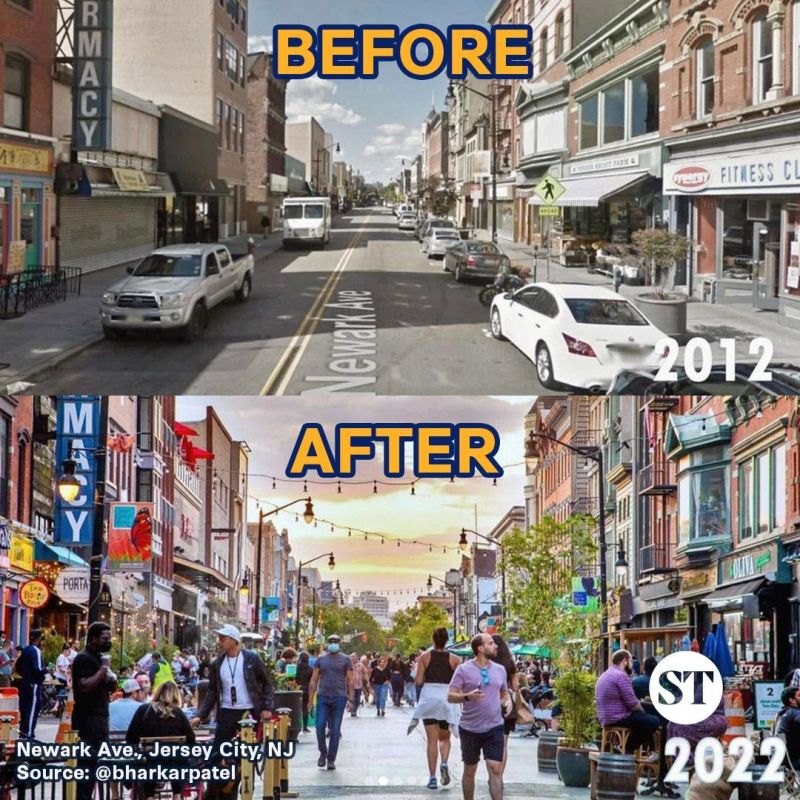
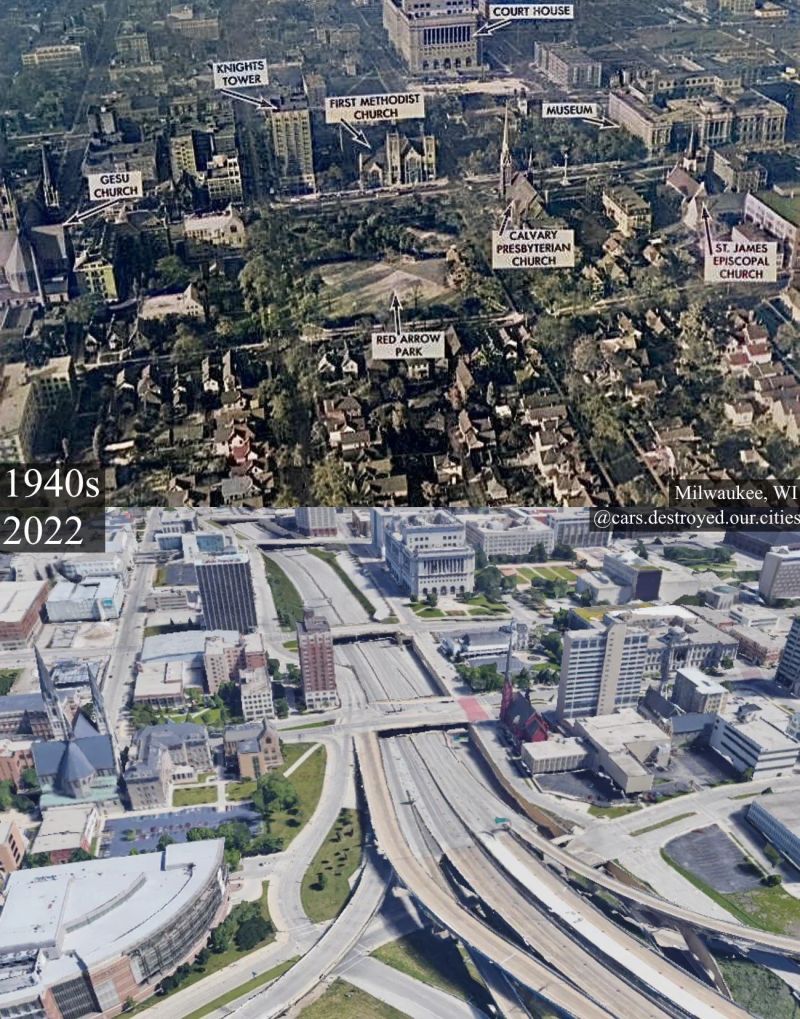
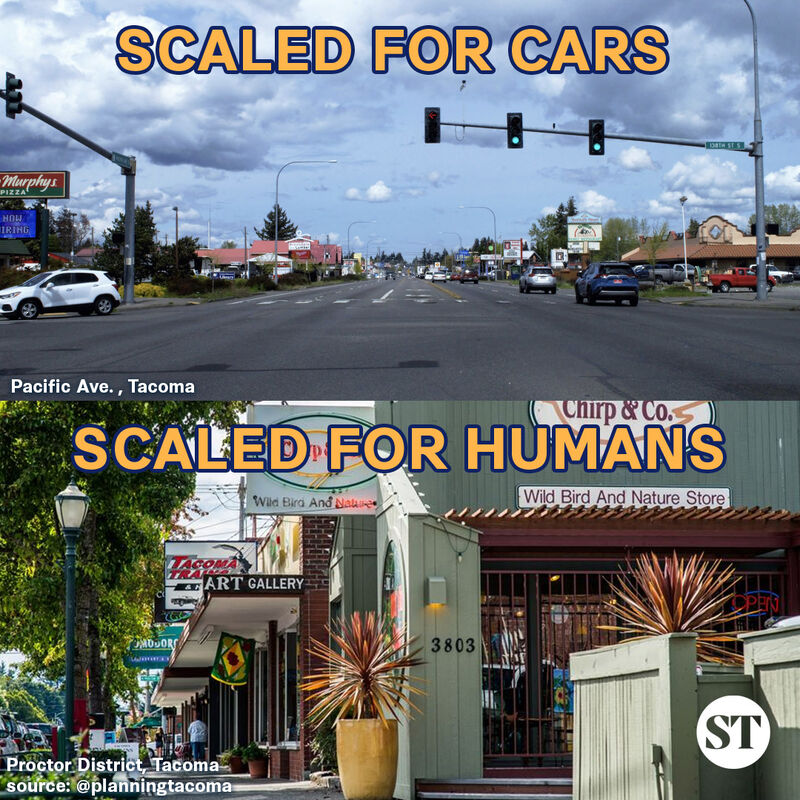
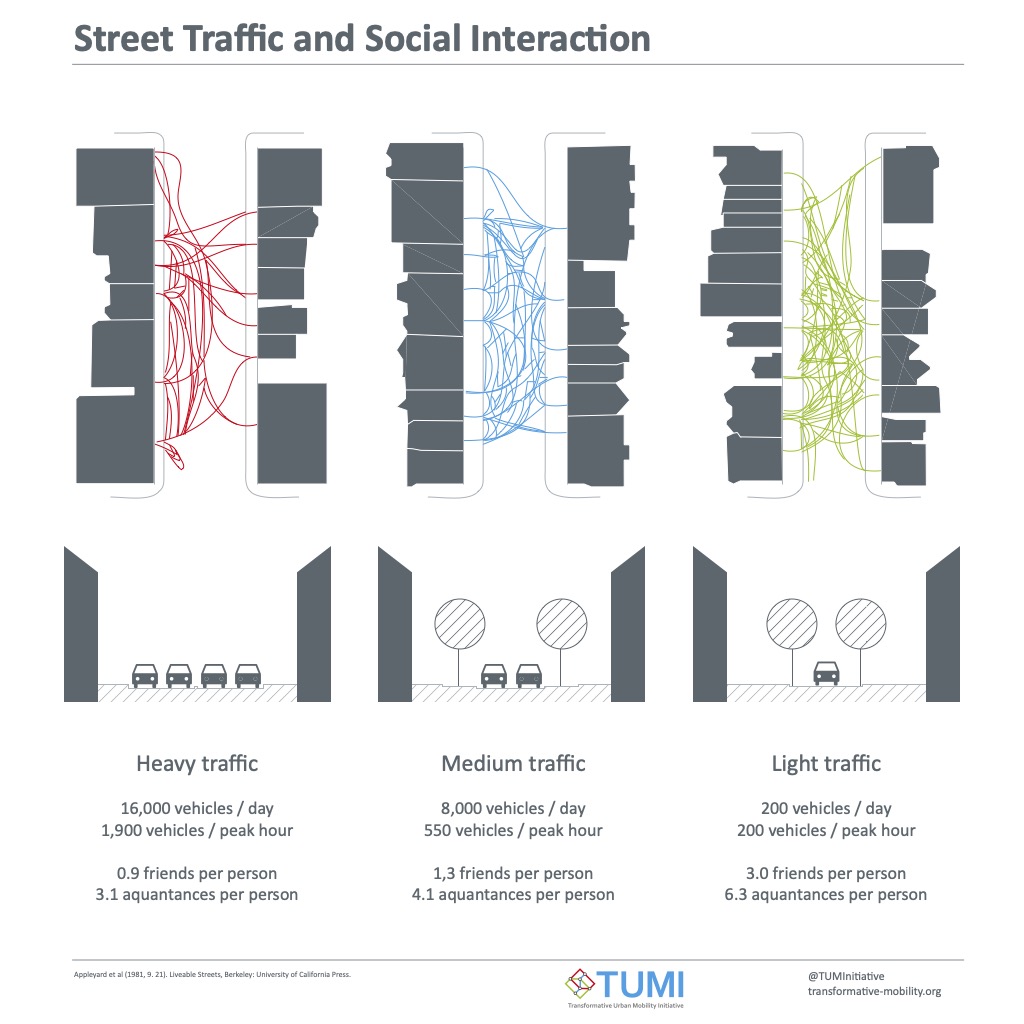
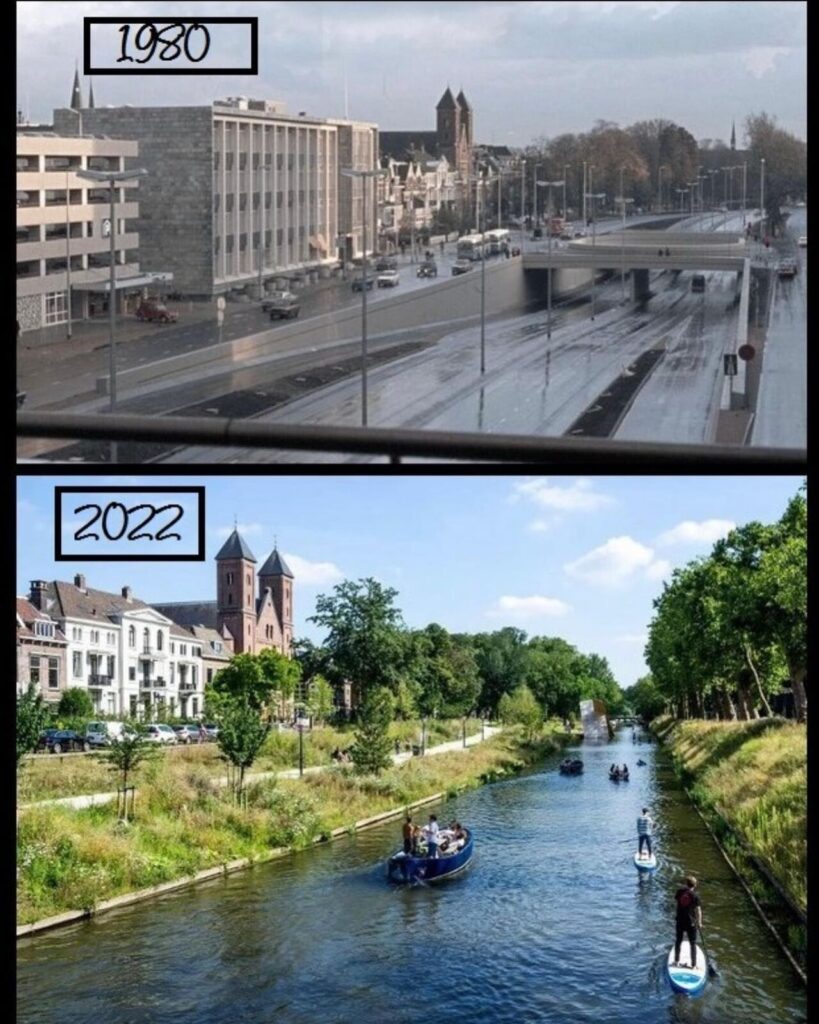
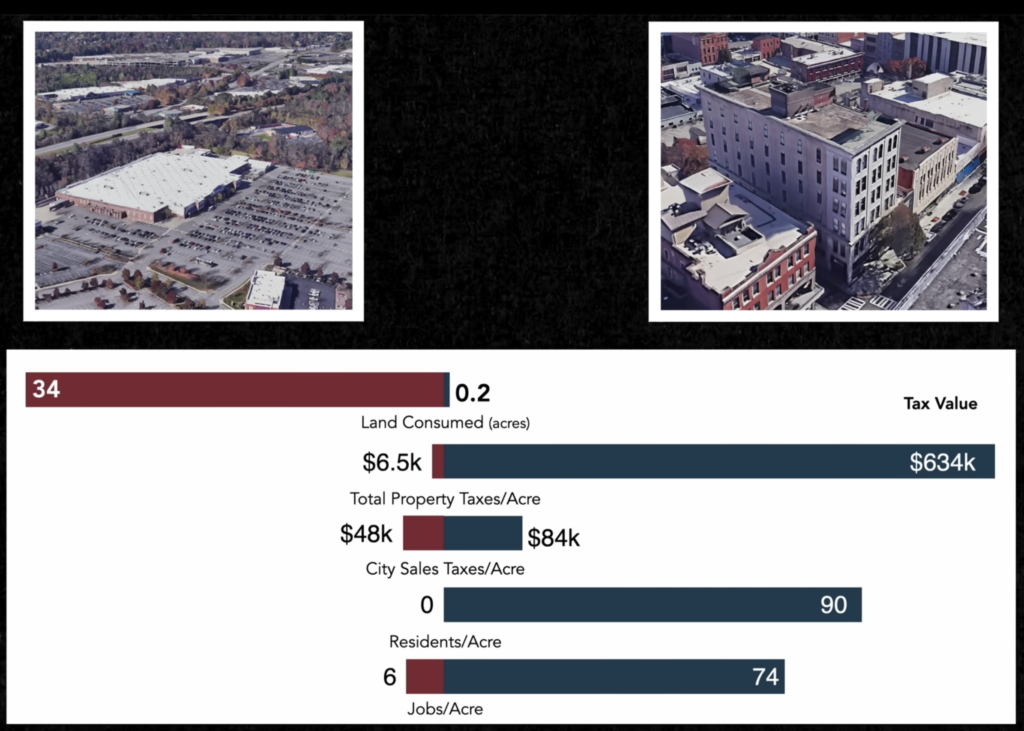
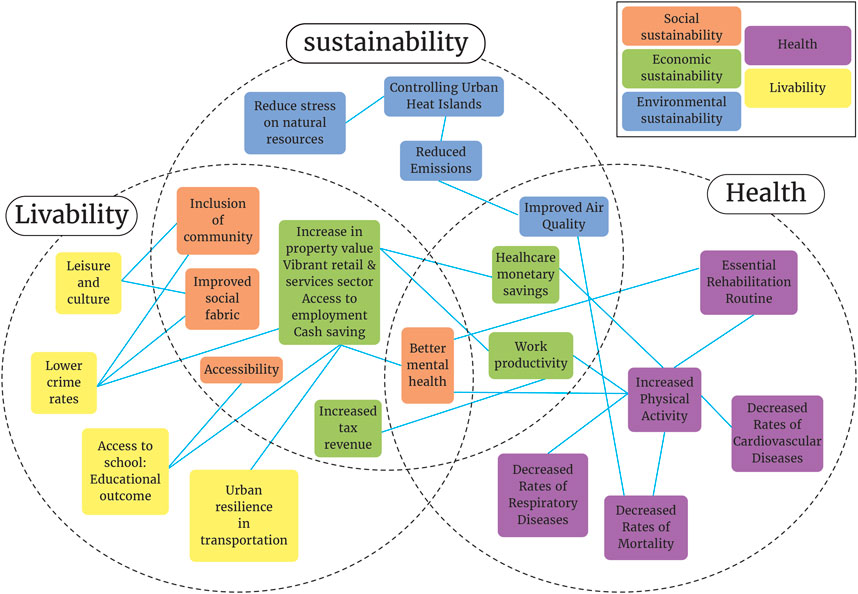
Key videos:
- How to design business park, Business Parks Suck (but they don’t have to)
- City ROI by type of design: Here’s the Math [ST07] (10 minute video)
Forgiving designs and kill pedestrians
Why designing to make walking safe makes driving better
Transit, needs people to ride and walkable destinations, walk shed
- Not Just Bikes and Strong Towns Discuss Public Transit in North America
- In 1902 every American city of greater than 10,000 people had a streetcar system. Wikipedia list of US streetcar systems.
- 33:00 Transit plan without a land use plan is a waste of time and money. Land use plan without a transit plan is a lost opportunity.
- 37:00 talks about what JPods networks provide. Connection between walkable spaces. Connect islands.
- 39:00 no neighborhood should be exempt from change and no radical change applied. Tinker, versus plan.
- America Always Gets This Wrong (when building transit).
- This is an excellent summary of how the parking engineers responsible for sprawl make unwalkable transit.
- 10-15 minute walk-shed
- CNBC: How Suburban Sprawl Weighs On The U.S. Economy
- 2:15 Federal rules
- How Suburban Development Makes American Cities Poorer [ST02]
- Why American Cities Are Broke – The Growth Ponzi Scheme [ST03]
- How Bankrupt American Cities Stay Alive – Debt [ST04]
- 2:15 Brainerd, MN 1890 to today. Bull dozed for the car. Paid for by Federal debt.
- 9:00 Crisis in family debt.
- 9:30 Cities were built by many people making small bets with 20:1 to 40:1 private versus public risk.
- Suburbia is Subsidized: Here’s the Math [ST07]
- ROI based on value per acre
- 3:16 Layfayette P&L Map
- 4:10 River Ranch, walkable community
- $1,500 to $9,200 per year tax increase to pay for sprawl
- 5:13 poor neighborhoods are subsidizing wealthy neighborhoods
- 6:00 Eugene, OR mixed use community
- 7:30 South Bend, IN
- 7:40 Charleston, SC
- 7:42 St Paul, MN
- 8:19 Revenue along transit lines.
- 9:00 Guelph, Canadian city focusing on infill development 2013, 2016, 2019
- The Houses that Can’t be Built in America – The Missing Middle
- How Bankrupt American Cities Stay Alive – Debt [ST04]
- 2:15 Brainerd, MN 1890 to today. Bull dozed for the car. Paid for by Federal debt.
- 9:00 Crisis in family debt.
- 9:30 Cities were built by many people making small bets with 20:1 to 40:1 private versus public risk.
- Stroads are Ugly, Expensive, and Dangerous (and they’re everywhere) [ST05]
- Introduction to the 85th Percentile Speed The Wrong Way to Set Speed Limits [ST06]
- minute 9:30. If drivers average higher than the purpose speed, change the design of the street to communicate to driver instincts the correct speed.
- Suburbia is Subsidized: Here’s the Math [ST07]
- ROI based on value per acre
- 3:16 Layfayette P&L Map
- 4:10 River Ranch, walkable community
- $1,500 to $9,200 per year tax increase to pay for sprawl
- 5:13 poor neighborhoods are subsidizing wealthy neighborhoods
- 6:00 Eugene, OR mixed use community
- 7:30 South Bend, IN
- 7:40 Charleston, SC
- 7:42 St Paul, MN
- 8:19 Revenue along transit lines.
- 9:00 Guelph, Canadian city focusing on infill development 2013, 2016, 2019
- The Houses that Can’t be Built in America – The Missing Middle
- The Trains that Subsidize Suburbia – GO Transit Commuter Rail.
- 3:30 This highlights the defect of building JPods networks to service 9-5 business parks.
- 4:10 Hub and spoke design
- 6:50 No walkable end points
- 15:00 Colossus waste of money.
- How Toronto Got Addicted to Cars
- 5:20: Jane Jacobs quote
Strong Towns
- Why Bad Street Design is Both Costly and Deadly
- This Ponzi Scheme Might END Suburban Prosperity
- We Keep Losing The Battle Against Traffic. Is This Inevitable?
- To long to get where you want to go, half hour
- Travel time is too variable and uncertain
- Getting where you want is miserable.
- Retrofitting suburbia, Ellen Dunham-Jones, TEDxAtlanta
- How public spaces make cities work, Amanda Burden, TED
- 4 ways to make a city more walkable | Jeff Speck
- 8:40 double the block size quadruple the fatal injuries.
- 10:30 Oklahoma City
Streetcars
- Vox: The real story behind the demise of America’s once-mighty streetcars
- There were 17,000 miles of streetcar lines across the country, running through virtually every major American city
- Streetcars, A History
- By 1902, some 15,000 miles were in service across the country (accounting for 97% of all such operations), an astounding jump of 70% in only twelve years.
- The Trolley and Daily Life
- Britannica: streetcar
- Wikipedia list of US streetcar systems
Value per acre
- It’s Time To Rethink How We Measure Cities. We Can’t Afford Not To.
- Mile per gallon versus miles per tank car comparision
- 4:00
In 1974, nearly a third of Americans reported spending time with their neighbors at least twice a week. Forty years later, that number had been cut in half. Over the same period of time, the number of Americans reporting zero interactions with their neighbors has grown from 20% to almost 35%
Unconstitutional Federal highways making unwalkable cities.
